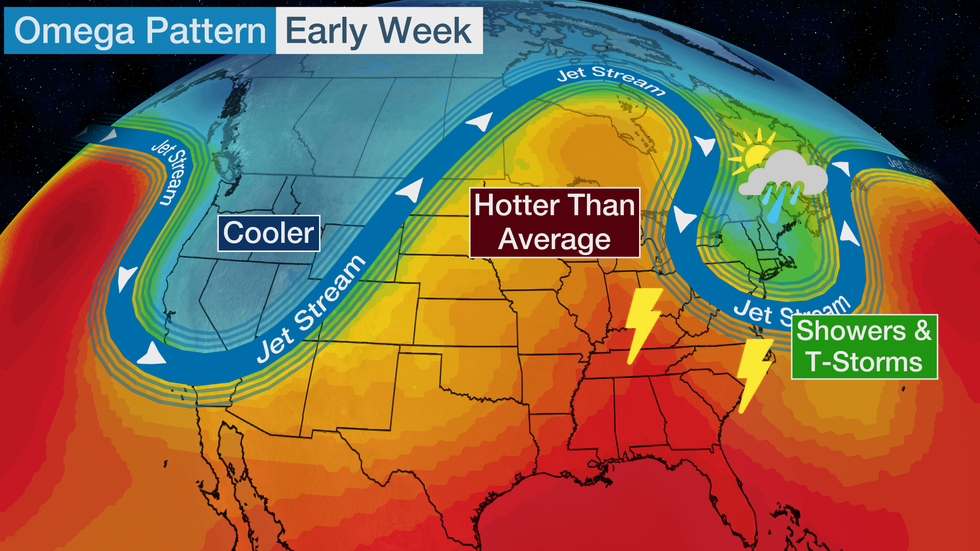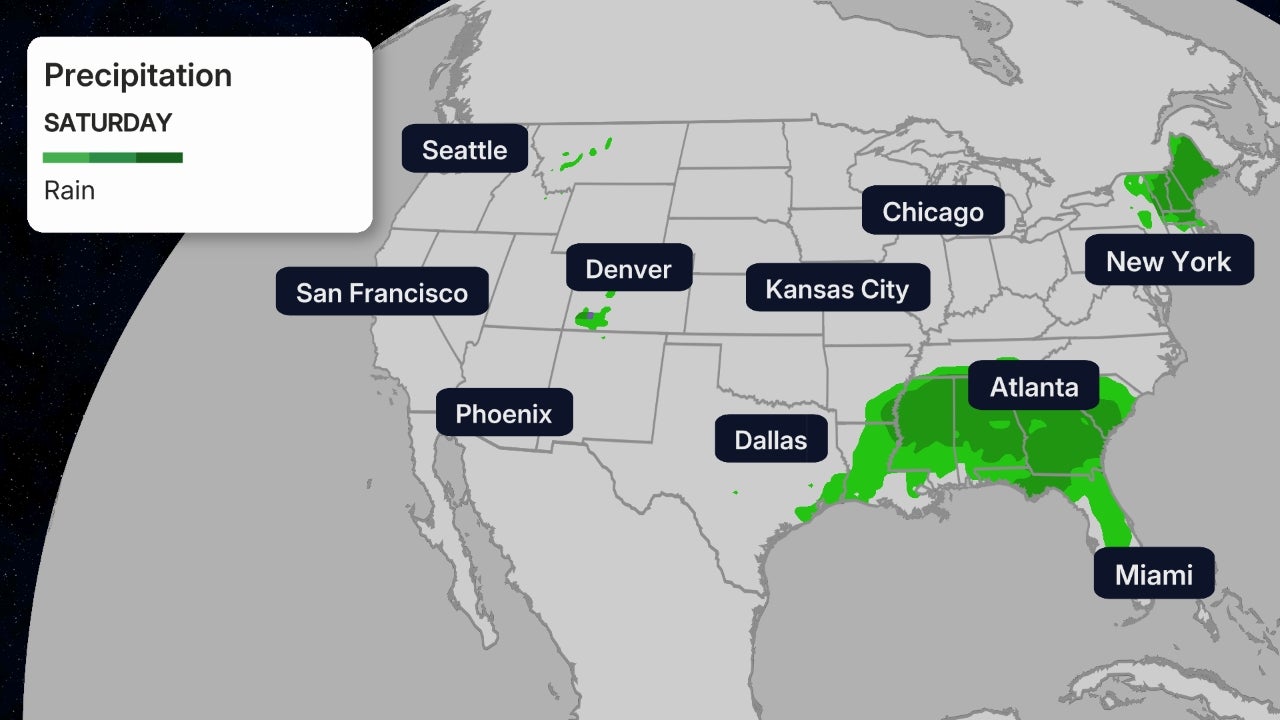A weather pattern called an omega block has developed across the United States, and it is bringing cooler conditions to the West, heating up the Midwest and triggering the development of storms east of the Rockies.
Here's how it works: There are two southward plunges of the jet stream, one in the West and another over the East Coast. In between is a ridge of high pressure, or a northward bulge in the jet stream, from the Midwest into Canada.
Now, notice how the jet stream pattern – that ribbon of fast-flowing air some 30,000 feet above the ground - described above and depicted in the image below resembles the greek letter omega: Ω.

The term omega block is not new — it's often taught in basic meteorology courses. The jet stream's exaggerated north-to-south alignment will cause the weather pattern to move slowly for a time, which is where the term block comes into play. Essentially, the weather pattern is clogged up, and this prevents weather systems from progressing at a steady pace from west to east like they normally do.
This weather pattern will be in place early week. Here's a closer look at what this means for the forecast.
Temperature Dichotomy
Temperatures have already tumbled from above average to below average across many parts of the West.

High temperatures will be the farthest below average over the Northern Rockies and Great Basin early this week.
Parts of western Montana, including Butte, might not get out of the 50s early this week.

This new weather pattern will also spread showers and storms from the Pacific Northwest into Montana early this week. Some of the highest peaks in the northern Rockies will even see summertime snowfall through Tuesday.
Meanwhile, the Midwest is heating up under the building ridge of high pressure.
An area from the upper Midwest to the Great Lakes will have multiple days of above average temperatures in the week ahead.
Chicago, Minneapolis, Des Moines, Iowa, and Omaha, Nebraska, are forecast to see highs in the upper 80s and 90s throughout this week.
Showers and Storms in the East
The southward plunge of the jet stream in the East in this weather pattern will likely produce some areas of showers and storms.
New England is one location that could see multiple days of rainfall through early week. This is good news for that region since drought conditions have recently developed in some areas. But too much rain in a short amount of time could also cause localized flash flooding.

Another area that could see stormy weather early in the week extends from the Southeast into the Ohio Valley and upper Midwest. That's where upper-level disturbances will ripple through and bring areas of heavy rainfall that could cause flash flooding.
The Weather Company’s primary journalistic mission is to report on breaking weather news, the environment and the importance of science to our lives. This story does not necessarily represent the position of our parent company, IBM.
The Weather Company’s primary journalistic mission is to report on breaking weather news, the environment and the importance of science to our lives. This story does not necessarily represent the position of our parent company, IBM.

No comments:
Post a Comment